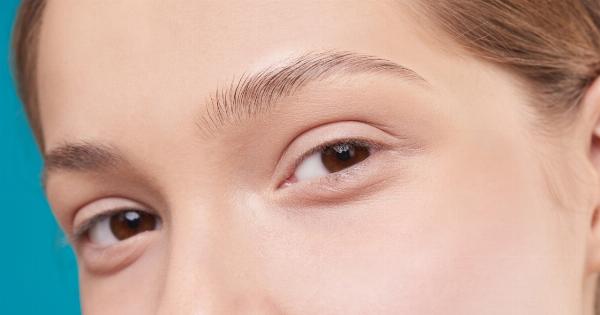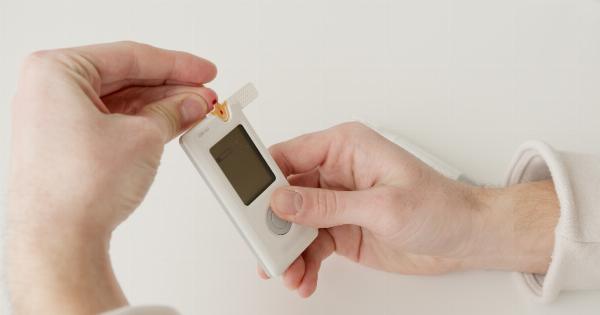Our hands are one of the most exposed parts of our body, and they often bear the brunt of daily activities and environmental elements. Over time, you may notice the appearance of spots on your hands, which can be a cause for concern.
These spots can vary in color, size, and shape, and understanding their underlying causes is crucial in determining the most effective treatment options. In this article, we will explore the different reasons for hand spots and provide insights on how to treat them.
Sunspots
One of the primary reasons for the development of spots on hands is prolonged exposure to the sun’s ultraviolet (UV) rays. Sunspots, also known as age spots or liver spots, typically appear as flat, brownish or blackish spots on the skin.
These spots are more common in individuals with fair skin and often occur on areas frequently exposed to the sun, including the hands. To reduce the appearance of sunspots, it is essential to protect your hands from the sun by regularly applying a broad-spectrum sunscreen with a high SPF, wearing protective clothing such as gloves, and seeking shade when the sun is at its peak.
Hyperpigmentation
Hyperpigmentation refers to the darkening of the skin due to an overproduction of pigment called melanin. This condition can lead to the development of dark spots, patches, or blotches on the hands.
Hormonal changes, such as those experienced during pregnancy or menopause, can trigger hyperpigmentation. Additionally, certain medications, injuries, and underlying medical conditions like Addison’s disease, can also contribute to the formation of hand spots.
Treatment options for hyperpigmentation may include topical creams containing ingredients like hydroquinone or kojic acid, chemical peels, or laser therapy.
Age-related Changes
As we age, our skin undergoes various changes, which can manifest as spots or discoloration on our hands.
Decreased production of collagen and elastin, two essential proteins responsible for maintaining skin’s structure and elasticity, can lead to the formation of wrinkles, crepiness, and age spots on the hands. Regularly moisturizing your hands, using products with antioxidants like vitamin C or retinol, and incorporating a healthy lifestyle, including a balanced diet and regular exercise, can help minimize age-related changes on the hands.
Chemical Exposure
Exposure to certain chemicals or irritants can result in the appearance of spots or rashes on the hands. This can occur due to contact with household cleaning products, industrial chemicals, or even certain cosmetics or personal care products.
To prevent chemical-induced hand spots, it is crucial to wear protective gloves while handling such substances and to thoroughly wash your hands afterward. Using gentle, hypoallergenic skincare products can also help reduce the risk of adverse reactions or skin irritations.
Fungal Infections
Fungal infections can affect the skin on the hands, resulting in the appearance of spots or patches. Tinea versicolor, for example, is a fungal infection that can cause discolored patches on various parts of the body, including the hands.
Candida yeast can also cause fungal infections on the hands, leading to red, itchy spots. Over-the-counter antifungal creams or medications prescribed by a healthcare professional can help treat fungal infections and reduce the associated spots or discoloration.
Eczema
Eczema, also known as dermatitis, is a common skin condition that can affect the hands. It is characterized by red, itchy, and inflamed skin, which can sometimes lead to the formation of spots or areas of discoloration.
Eczema can be triggered by various factors, including allergies, irritants, or genetic predisposition. Managing eczema involves keeping the skin moisturized, avoiding triggers, using gentle skincare products, and in more severe cases, seeking medical treatment such as topical corticosteroids or immunomodulators.
Psoriasis
Psoriasis is a chronic autoimmune condition that primarily affects the skin, leading to the rapid buildup of skin cells. It is characterized by thick, scaly patches of skin, which can also appear on the hands, along with redness and inflammation.
Psoriasis spots on the hands can be itchy or painful and may require medical intervention for effective management. Treatments for psoriasis may include topical corticosteroids, phototherapy, oral medications, or biologic injections, depending on the severity of the condition.
Unprotected Wound Healing
When our skin sustains a wound, proper healing is essential to prevent the formation of scars or spots.
However, if the wound is not adequately protected or becomes infected, it can result in delayed or abnormal healing, leading to the formation of spots or discoloration. To ensure optimal wound healing on the hands, it is crucial to keep the wound clean, apply appropriate dressings, and seek medical attention if the wound shows signs of infection or does not heal within a reasonable timeframe.
Chemical or Cryosurgery
Various dermatological procedures involving the use of chemicals or cryotherapy can lead to the development of spots on the hands.
Chemical peels, which involve the application of a chemical solution to the skin, can cause temporary discoloration or redness. Similarly, cryosurgery, where liquid nitrogen is used to freeze and destroy abnormal skin cells, may result in skin discoloration or post-inflammatory hyperpigmentation.
It is essential to discuss the potential risks and side effects of these treatments with a qualified healthcare professional before undergoing any procedures.
Hand Spot Treatment Options
When it comes to treating hand spots, the approach may vary depending on the underlying cause or condition. Here are some common treatment options to consider:.
Topical treatments: Creams, lotions, or serums containing ingredients like hydroquinone, kojic acid, retinol, vitamin C, or corticosteroids can help lighten or fade hand spots.
These topical treatments can be obtained over-the-counter or may require a prescription from a healthcare professional.
Laser therapy: Laser treatments such as intense pulsed light (IPL) or fractional laser resurfacing can effectively target and reduce the appearance of hand spots.
These procedures work by directing light energy or laser beams into the skin, prompting the body’s natural healing response and encouraging the formation of new, healthier skin cells.
Chemical peels: Chemical peels involve the application of a chemical solution to the skin, which exfoliates and stimulates the growth of new skin cells. This helps improve the appearance of hand spots, wrinkles, and age-related changes.
Chemical peels can vary in strength, from superficial to deep, and it is essential to consult with a dermatologist to determine the most suitable option for your specific needs.
Cryotherapy: Cryotherapy involves the use of extreme cold, usually in the form of liquid nitrogen, to freeze and destroy unwanted skin cells.
This procedure can be effective in removing certain types of hand spots, although multiple sessions may be required for optimal results.
Prescription medications: In some cases, prescription medications such as corticosteroids, immunomodulators, or antifungal drugs may be necessary to treat underlying conditions or infections that are causing hand spots.
These medications should always be used under the guidance of a healthcare professional.
Remember, while these treatment options can be effective, it is crucial to consult with a dermatologist or healthcare professional to determine the underlying cause of your hand spots and to receive personalized advice and recommendations for treatment.
Conclusion
Having spots on your hands can be worrisome, but with a better understanding of their possible causes and available treatment options, you can take proactive steps to address them.
Whether it’s protecting your hands from the sun, using topical treatments, undergoing dermatological procedures, or seeking medical intervention when necessary, there are various ways to treat and manage hand spots. By prioritizing hand care and seeking professional advice when needed, you can keep your hands looking healthy, youthful, and spot-free for years to come.






























